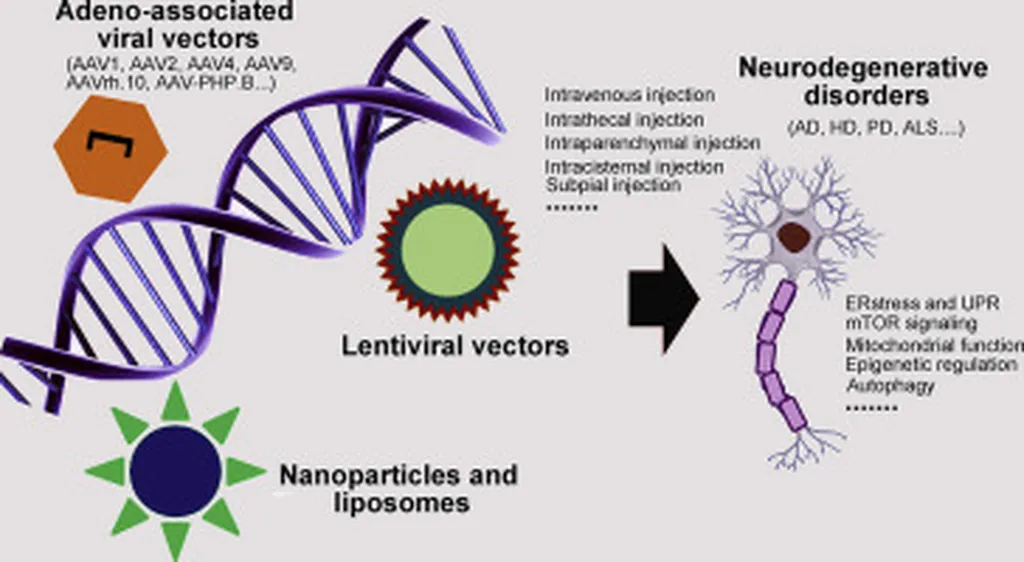In the quest to treat neurodegenerative disorders like spinocerebellar ataxias (SCAs), researchers are turning to innovative gene therapy approaches, and a recent study published in the journal *Molecules* (translated as “Molecules” in English) offers a promising step forward. Led by Francesca Ferrara from the Department of Chemical, Pharmaceutical and Agricultural Sciences at the University of Ferrara, Italy, the research focuses on developing liposomes as efficient delivery systems for nucleic acids, paving the way for potential CRISPR/Cas9-based therapies.
Liposomes, tiny vesicles made of lipid bilayers, are already known for their biocompatibility and ability to interact with cell membranes. However, Ferrara and her team aimed to enhance their physicochemical properties to make them more effective in delivering nucleic acids to neuronal cells. “The improvement of the physicochemical properties of liposomes, such as surface charge, lipid composition, and functionalization, makes these vesicles eligible delivery nanosystems for the gene therapy of many pathological conditions,” Ferrara explained.
The study involved a pre-formulation analysis to create liposomes that could effectively deliver various nucleic acid cargo models, including λ phage DNA, plasmid DNA, and mRNA encoding GFP. Using the ethanol injection method, the researchers produced liposomes with different lipid compositions and analyzed their dimensional stability and DNA interaction capabilities. The most promising formulations were then tested in vitro using a neuroblastoma cell line (SH-SY5Y) to assess their toxicity and transfection efficiency.
Among all the formulations tested, one stood out: a liposome containing phosphatidylcholine, phosphatidylethanolamine, pegylated 1,2-distearoyl-sn-glycero-3-phosphethanolamine, cholesterol, and dioctadecyl-dimethyl ammonium chloride in a specific molar ratio. This formulation demonstrated the highest efficiency in mRNA delivery, marking a significant advancement in the field.
While the study did not deliver CRISPR/Cas9 components, it lays the groundwork for future investigations aimed at treating autosomal dominant neurodegenerative disorders like polyglutamine SCAs. “Although this study was designed with the goal of ultimately enabling the delivery of a CRISPR/Cas9 system for treating autosomal dominant neurodegenerative disorders such as polyglutamine spinocerebellar ataxias (SCAs), CRISPR/Cas9 components were not delivered in the present work, and their application remains the objective of future investigations,” Ferrara noted.
The implications of this research extend beyond the laboratory. As gene therapy continues to evolve, the development of efficient delivery systems like liposomes could revolutionize the treatment of various genetic disorders. This could have significant commercial impacts, particularly in the energy sector, where genetic engineering and biotechnology are increasingly intertwined with sustainable energy solutions.
Ferrara’s work, published in *Molecules*, highlights the potential of liposomes as a versatile tool in gene therapy. As researchers continue to refine these delivery systems, the future of treating neurodegenerative disorders and other genetic conditions looks increasingly promising. The journey towards effective CRISPR/Cas9-based therapies is still ongoing, but this study represents a crucial step forward, offering hope for patients and a new frontier for scientific exploration.

